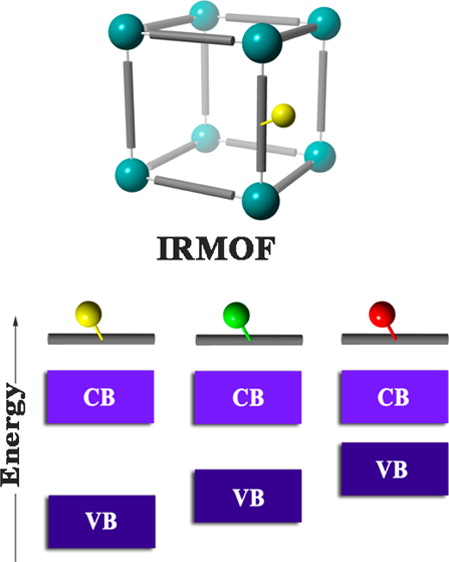Engineering of Band Gap in Metal-Organic Frameworks by Functionalizing Organic Linker: A Systematic Density Functional Theory Investigation
슈퍼관리자
2021-05-21
Engineering of Band Gap in Metal-Organic Frameworks by Functionalizing Organic Linker: A Systematic Density Functional Theory Investigation
-
Authors :
Hung Q. Pham, Toan Mai, Nguyen-Nguyen Pham-Tran, Y. Kawazoe, H. Mizuseki, and Duc Nguyen-Manh
-
Journal :
J. Phys. Chem. C
-
Vol :
118
-
Page :
4567-4577
-
Year :
2014

Abstract
A systematic investigation on electronic band structure of a series of isoreticular metal–organic frameworks (IRMOFs) using density functional theory has been carried out. Our results show that halogen atoms can be used as functional groups to tune not only the band gap but also the valence band maximum (VBM) in MOFs. Among halogen atoms (F, Cl, Br, I), iodine is the best candidate to reduce the band gap and increase the VBM value. In addition, it has been found that for the antiaromatic linker DHPDC (1,4-dihydropentalene-2,5-dicarboxylic acid) the energy gap is 0.95 eV, which is even lower than those calculated for other aromatic linkers, i.e., FFDC (furo[3,2-b]furan-2,5-dicarboxylic acid) and TTDC (thieno[3,2-b]thiophene-2,5-dicarboxylic acid). By analyzing the lowest unoccupied molecular orbital–highest occupied molecular orbital gaps calculated at the molecular level, we have highlighted the important role of the corresponding organic linkers in the MOF band gap. In particular, the change of C–C–C═O dihedral angle in the organic linker can be used to analyze the difference of band gaps in MOF crystals. It is shown that a deep understanding of chemical bonding within linker molecules from electronic structure calculations plays a crucial role in designing semiconductor properties of MOF materials for engineering applications.















